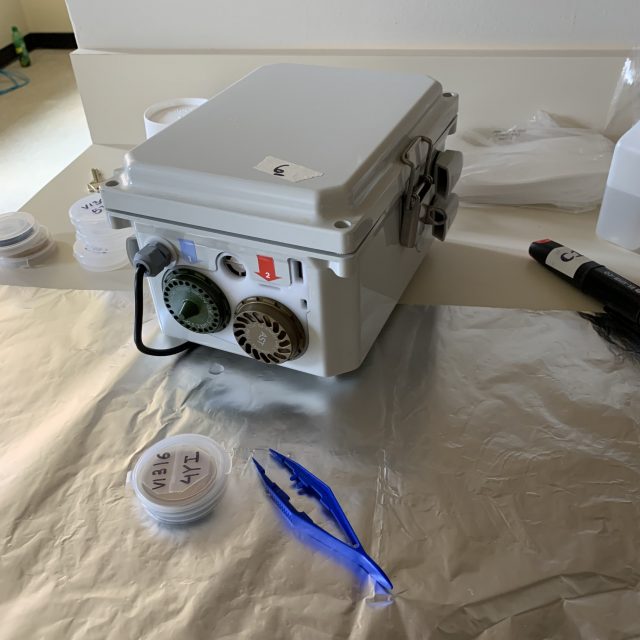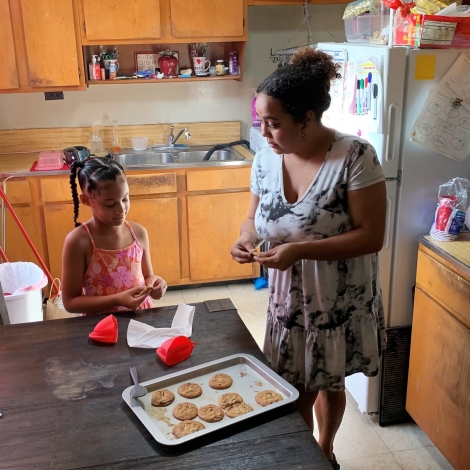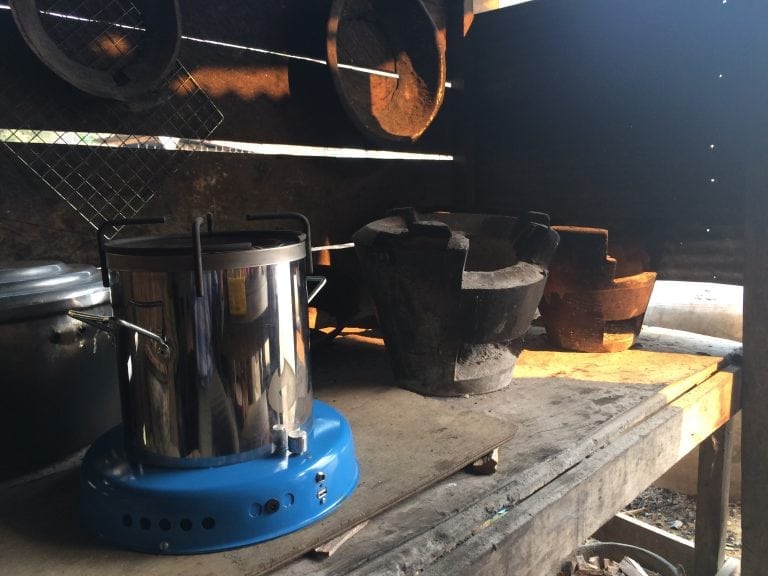Sustainable development practitioners have long known of the link between stove design and indoor air quality. Creating healthy living spaces is one of the drivers behind the movement to replace smoky wood fires and stoves with clean-burning cooking technologies. Now we see the link between stove technology and air quality as it extends into homes in the global West. A new study has found that replacing gas ranges with induction stoves can improve the air in homes in an affordable housing building in New York City (USA).
WE ACT, a non-profit environmental organization working to build healthy communities, monitored air quality for 10 months in 20 homes at 1471 Watson Avenue in the Bronx, one of New York City’s five boroughs. The building has been selected to become the New York City Housing Authority’s first all-electric building conversion.
Their key findings include a 35 percent reduction in daily nitrogen dioxide (NO2) concentrations compared to apartments using gas stoves when controlling for temperature and other factors.
The average carbon monoxide level over 24 hours was lower in homes with induction ranges, at .8 parts per million compared to 1.4 parts per million in homes with gas.
A controlled cooking test found that kitchens with gas stoves had NO2 levels of 192 parts per billion, compared to 14 parts per billion in kitchens with inductions stoves. And a survey found that the people who had converted to induction stoves unanimously ‘loved’ them for their ease and faster cooking and cleaning times, the researchers said.

Researchers used this air quality monitor to test pollution levels in homes using gas or induction stoves. Photo: WE ACT
“We were not expecting just how high the NO2 levels rose during the Controlled Cooking Test, which is a test method that helps to isolate the emissions from cooking on the stove itself compared to external sources like the gas boiler or cars outside,” Jennifer Ventrella, a PhD Student in the Public & Urban Policy Program at The New School and a former E4C Fellow who was involved in the research.
“NO2 concentrations while using the gas stove reached an average of 197 ppm, which is nearly double the EPA threshold for one-hour NO2 averages that are considered unhealthy for sensitive groups such as children, the elderly, or those with pre-existing health conditions. Further, NO2 concentrations reached as high as 600 ppb, which is well above the EPA threshold for one-hour NO2 averages that are considered unhealthy for all individuals, in sensitive groups or not,” Ms. Ventrella says.
US Environmental Protection Agency (EPA) standards call for a maximum of 53 parts per billion on average annually, and 100 parts per billion is in the 98th percentile of 1-hour daily maximum concentrations.
Stoves were not the only source of air pollution discovered while monitoring air quality during the study.
“We found that even though swapping an induction stove for a gas stove led to significant decreases in NO2 concentrations, there were other sources of pollution that contributed to NO2 levels that were still above what is considered safe. Therefore, WE ACT is advocating for a holistic, whole-building approach to electrification that address other sources of indoor air pollution,” Ms. Ventrella says.
The study adds to established evidence of air pollution caused by gas ranges and gas heating in homes.
The NO2, CO and formaldehyde that gas stoves emit can aggravate respiratory disease, particularly asthma. Research supports links between NO2 levels and the exacerbation of asthma symptoms in children. And CO exposure can cause fatigue, headaches and dizziness.
In comparison, induction stoves have been shown to produce fewer indoor air pollutants and consume energy more efficiently. For those not familiar with the technology, induction stoves use magnetic fields to heat up pots and pans. Pans reach cooking temperatures more quickly than on gas ranges, and induction surfaces are safer because they are cool immediately after removing the pan.
From the global cookstove transition to stoves in New York
There may be not-so-tenuous links between gas stoves in the Bronx and open cooking fires in low-income countries. While working as an E4C Fellow and at university, Ms. Ventrella researched clean cookstoves in rural communities in Uganda and Honduras. She saw fundamental similarities in the work to improve cooking technology in those regions and in New York.
“The same behavioral and cultural considerations for lowering barriers to adoption were present, including the importance of widespread public education around the health and environmental harms of cooking with polluting fuels, and the need to couple technology with supporting implementation policies to enable large-scale change compared to project-by-project initiatives,” Ms. Ventrella says.
Equity was another commonality.
“Low- and moderate-income households are the first to be left behind in the transition despite contributing the least to global emissions. Even within LMI countries, there are vast disparities in the access to cleaner cooking fuels and technologies, with urban areas often having more access. The same is true of the United States, where low- and moderate-income households have a harder time accessing cleaner energy sources and technologies while facing higher concentrations of pollution in their environments. Therefore, prioritizing equity in energy transitions is paramount regardless of the geographic context,” Ms. Ventrella says.
Logistics and finances
During their study, WE ACT hit an obstacle in the retrofit of homes with gas ranges. To comply with building codes, homes required a new 40 amp breaker in or near the kitchen and an upgraded 220 volt outlet for the induction stove. The building’s power supply only supported two stove installations per vertical line, meaning that a whole-building conversion would require upgraded wiring.
“Logistically, we have the existing technology and knowledge, but we need more electricians and skilled laborers for the scale of the transition required,” Ms. Ventrella says.
WE ACT advocates for a publicly-funded transition from gas cooking and heating to induction stoves and electrified heating.
“Government programs that take a comprehensive approach, where several interventions are packaged into a whole-building retrofit, can maximize benefits to residents’ health and expand resources for more equitable and efficient delivery of interventions,” Ms. Ventrella says.
Read the study at weact.org: Out of Gas, In With Justice

